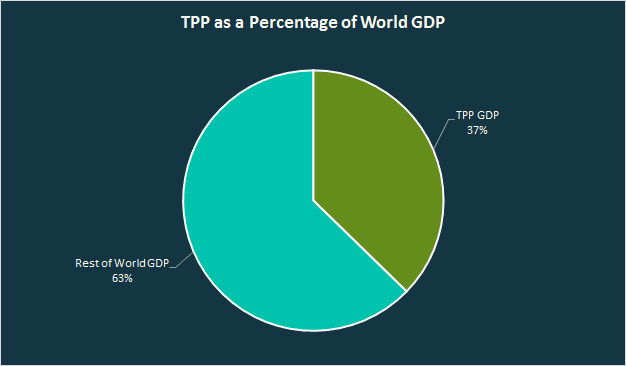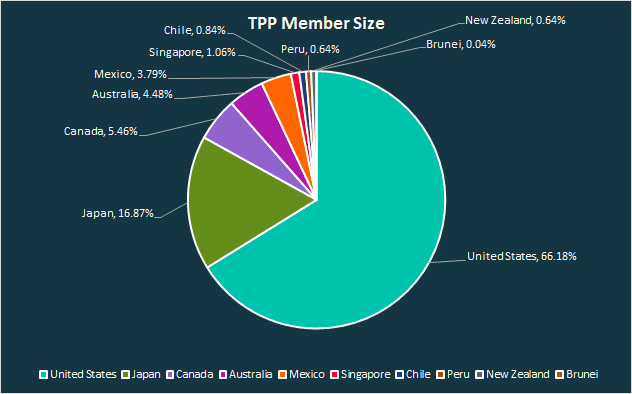Donald Trump wasted no time making good on one of his largest campaign promises: ending the US involvement in the Trans-Pacific Partnership (TPP). As a member of the TPP, how will Singapore be impacted by this development?
The Back Story
The fully understand the TPP, we need understand how this agreement came into existence.
It began in 2006, when Singapore, Brunei, Chile and New Zealand formed the Trans-Pacific Strategic Economic Partnership. This agreement, at its core, was meant to provide free trade opportunities between these four member nations. The term “free trade” is thrown around a lot, but this generally means a reduction in taxes and tariffs on imports from other nations. While this type of agreement can make it easier for domestic jobs to be outsourced, the general rationale is that free trade will benefit all participating countries in the long run by lowering prices.
In 2008, the United States, Australia, Peru, and Vietnam formally announced their interest in joining the agreement. This was followed by Malaysia in 2010, Mexico and Canada in 2012, and finally Japan in 2013. In total, these 12 member nations account for roughly 40% of the world’s economic power – providing a powerful marketplace for the exchange of goods and services. For reference, the European Union accounts for roughly 23% of world GDP.

Enter Donald Trump
President Barack Obama was a champion of the agreement, and saw the TPP as a way for U.S. businesses to gain access to Southeast Asian markets and help slow China’s growing influence in the region. In total, the final text of the TPP would have eliminated nearly 18,000 taxes, tariffs and restrictions on foreign trade between member nations. Opponents of the TPP, like Donald Trump, saw the agreement as a way to outsource US jobs at the expense of the American working class. Those in Donald Trump’s camp did not believe the long-term benefits would outweigh the short-term negative impacts. These are both very simplified descriptions of their positions, but does a good job summing up the debate carried out in the United States and elsewhere.
When Donald Trump became President, one of his first acts was to signal an American exit from the TPP, leaving the 10-year old agreement in a state of disarray. The United States is the largest single member of the agreement, accounting for 66% of the TPP member nation’s total GDP. By comparison, Singapore comprises just 1.06% of TPP’s GDP. Japan is the only country approaching the United States size within the agreement, at just 17%.

What This Means for Singapore
At face value, this may seem like a very bad thing for Singapore. However, there are three reasons why the impacts to Singapore’s economy will be negligible.
- As a champion of free trade, Singapore already has robust free trade agreement with the United States outside of the TPP. In fact, Singapore has existing free trade agreements with Japan, New Zealand, Peru, Australia and talks are underway with Mexico and Canada . Singapore is well positioned from a trade perspective with, or without, TPP. The same cannot be said for neighboring countries like Vietnam or Malaysia.
- As we know, Singapore’s economy is heavily dependent on foreign investment – not just the trade of goods and services. These same trade agreements referenced in point one will continue to ensure that Singapore remains an attractive place for foreigners to build, invest and start businesses.
- The United States accounts for just 6.7% of annual exports leaving Singapore. China, Hong Kong, Malaysia and Indonesia are all larger trade partners on an annual basis. While this agreement may limit trade with the United States in some minor capacities, the United States makes up a relatively small portion of Singapore’s overall export economy.
The Long-Term View
While an exit from TPP is not an immediate negative for Singapore, the overall protectionist trade views of Donald Trump could cause a slowdown in trade between Singapore and the United States in the years to come. The larger concern here is that President Trump’s trade policies will not stop with TPP, and trade between the United States and Singapore could be negatively impacted by other measures. These measures could include a repeal or renegotiation of existing trade agreements or a substantial increase in import tariffs when goods enter the United States.
Longer-term, this is the real story that Singapore residents, consumers and investors should be watching. A significant decline in global trade could hurt every economy in the world, and ultimately lead to decline in Singapore’s trade with every country. At Value Penguin, we will keep you updated on these developments in the months and years to come.
The article What Does a US Exit from the Trans-Pacific Partnership Mean for Singapore? originally appeared on ValuePenguin.
ValuePenguin helps you find the most relevant information to optimise your personal finances. Like us on our Facebook page to keep up to date with our latest news and articles.
More From ValuePenguin:
- What Are The Best Balance Transfer Credit Cards of 2017?
- Best Personal Loans in Singapore 2017
- Best Travel Insurance 2017
Source: ValuePen

